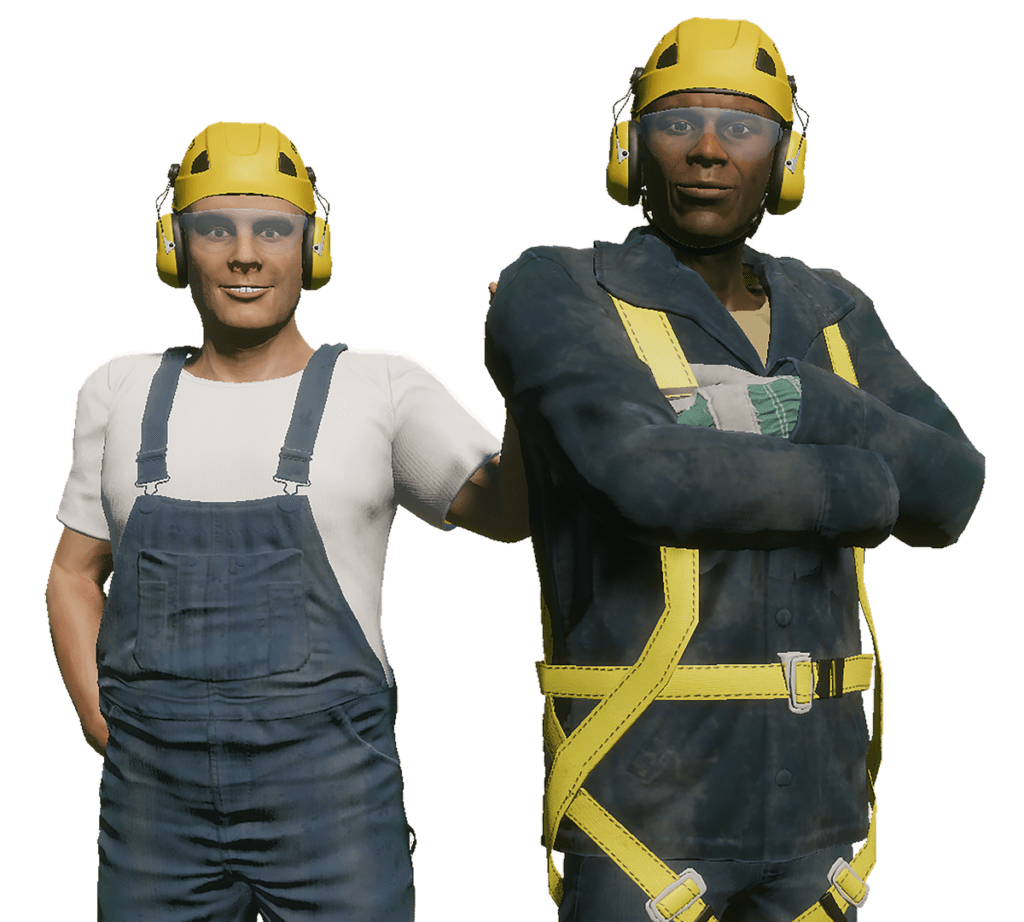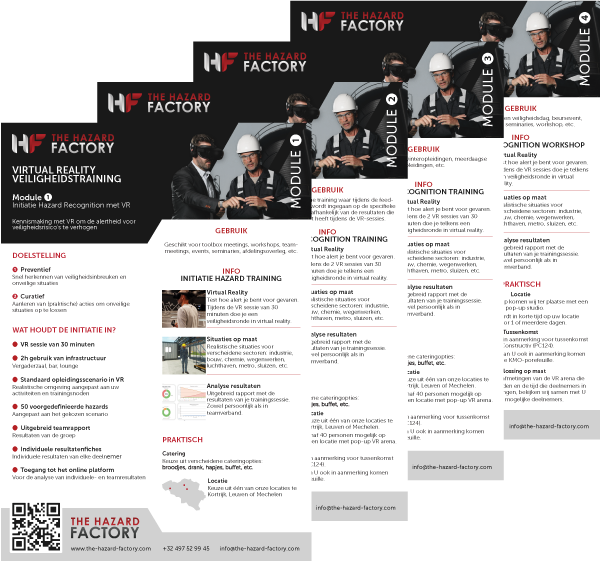Virtual Reality
Safety training
Thanks to Virtual Reality, you can perfectly train and apply what you learn in a course in practice.
This way, you can start turning the knowledge into real competencies and apply them immediately in your daily job. So the ideal methodology in the context of security.
VR safety training
In Virtual Reality Safety Training, we simulate real-life site scenarios in a 360° interactive learning environment. Students will have a real-life experience with hyper-realistic visual and audio materials. They will be equipped with state-of-the-art VR headsets and accessories. This allows participants to move around freely and interact with virtual machines, tools, other participants,… Multiple senses come into play!
Emergency protocols, handling hazardous materials, working at heights and much more can now be trained in VR. The environment remains completely recognizable for the trainee and the trainings are reproducible 1 on 1. Virtual Reality makes on-the-job training easier, more interactive, safer and cheaper.
The effectiveness of a
Virtual Reality training

The effectiveness of any training is determined by its quality and combination of different learning methodologies.
PWC research shows that there are several things crucial in a successful professional training:
- Recognizability of subject matter and examples cited
- Repetitions after certain intervals
- Appropriate context of the scenarios
- Correct feedback
All 4 of these factors are combined in a VR safety training.
In addition, it is also interesting in this study to compare the VR learning methodology with classroom training and e-learning on the following points:
- Emotional involvement in training
- Self-confidence of the participants to apply the learning material
- Focus of participants
- Required training time
Read the full study here.

The training offer
We are a big proponent of “blended” learning where different learning methodologies are employed to bring participants not only the knowledge, but also real skills.
One can only speak of acquired competencies when he/she succeeds in putting the knowledge gained in a training into practice. VR training is ideally suited for this purpose and is usually part of a training course.
Find out how we do that here.
High quality hardware,
high quality VR training




VR hardware consists of several components.
There are the headsets, of course, but also streaming servers, professional graphics cards, wireless access points, tracking tools, etc.
There is also a lot involved in terms of software: local and cloud applications, networking, performance monitoring, etc.
Technology is evolving at lightning speed in terms of both hardware and software, with major leaps being made every 6 months. Through dual use of hardware (professional and entertainment), we manage to amortize these investments at an accelerated rate and keep up with the latest developments.
Moreover, we have very good partnerships with the manufacturers of our hardware and our applications are also sometimes seen as their playing field for further developments.
Therefore, when companies call on our services, they do not have to worry about large investments that are completely obsolete shortly afterwards.
'Reality could be compared to a 1:1 scale map with odour, noise and touch. If we manage to create such a map, it would become indistinguishable from the reality it's intended to represent.'
'A quarter of people will spend at least an hour a day in the metaverse by 2026'
'Connecting more people to AR and VR technologies could transform everything from education and healthcare to mining and tourism'
Advantages of a
Virtual Reality safety training
For many training participants, it is not efficient to listen to an instructor and take notes at the same time. For today’s students of all generations (!), it’s all about combining different multimedia and sensory experiences.
When using VR as a learning methodology, all of these are combined. Interactive VR scenarios that drive higher participation and better choices.
Collaboration and discussions between participants are much more engaging. In fact, interactive learning helps students learn 2 to 4 times faster than with other learning methods.
Significantly improved safety performance
Less human error
Up to 80% better retention
of the subject matter
Halving the necessary
training time
Smoother decision-making and team collaboration



